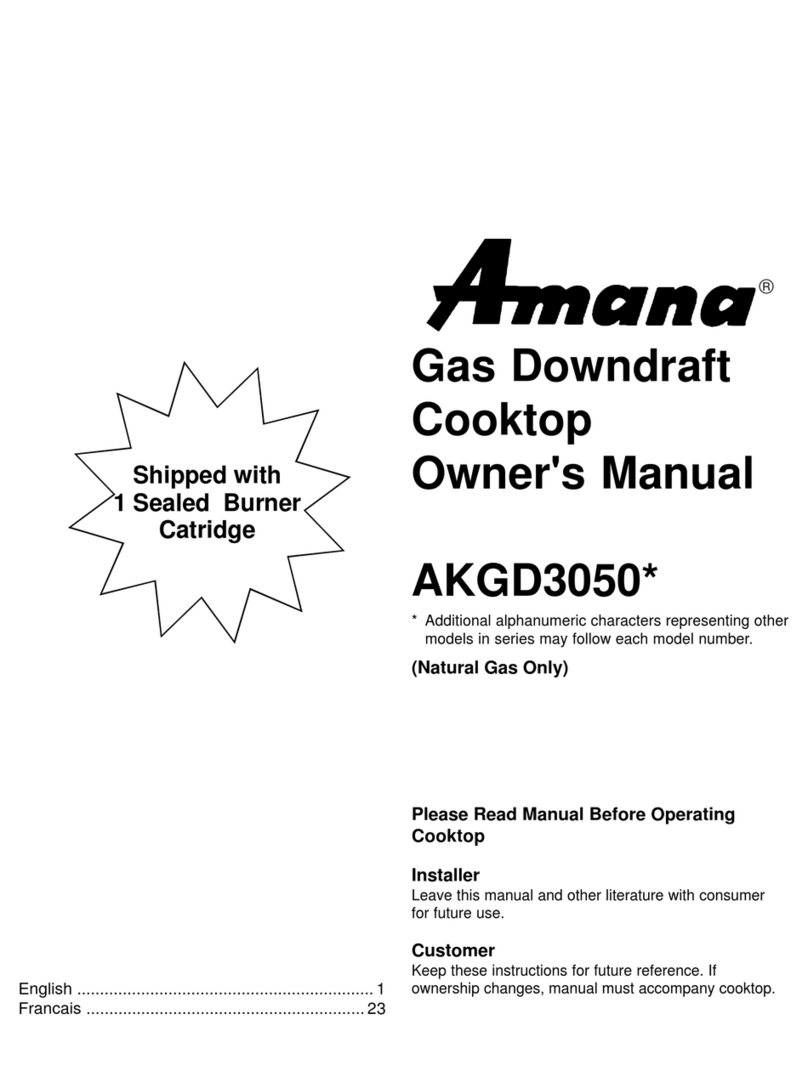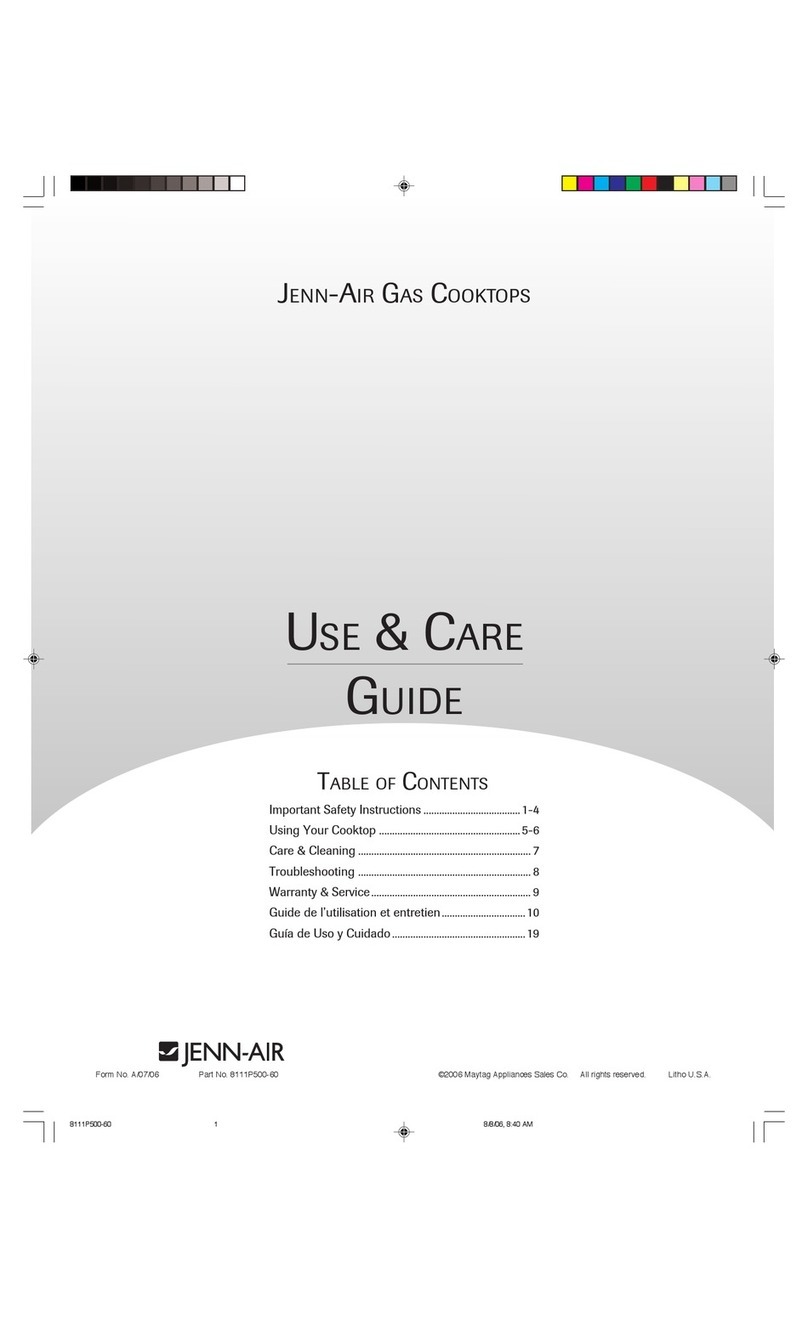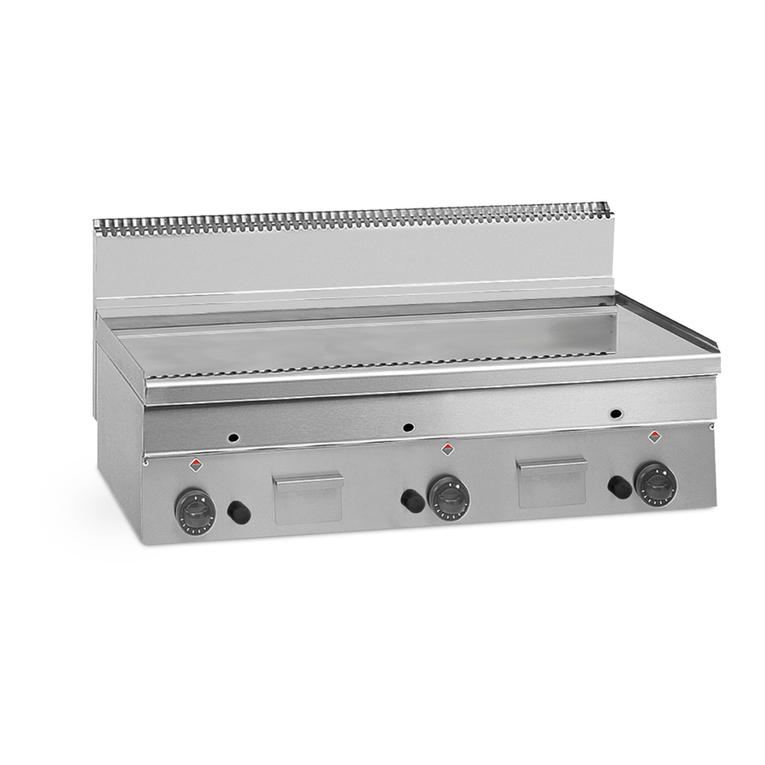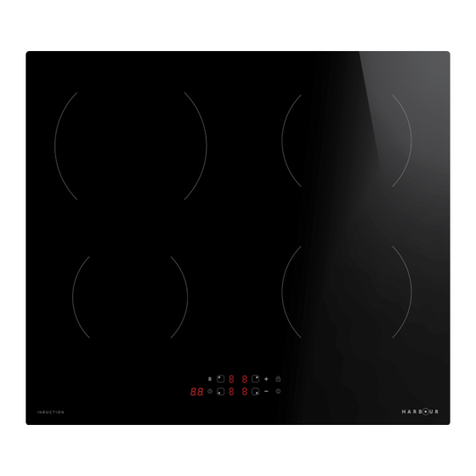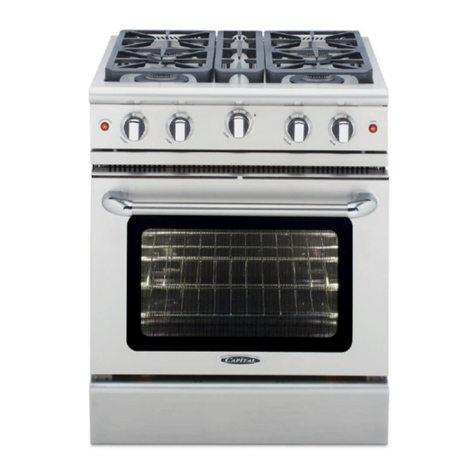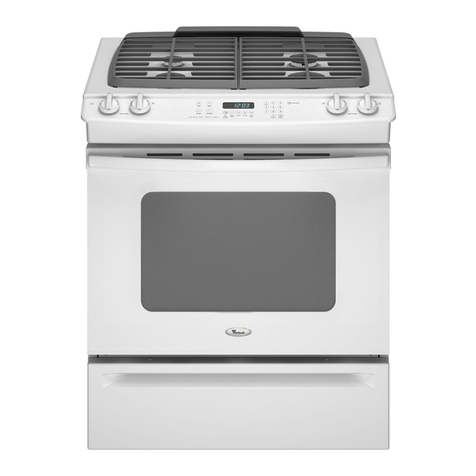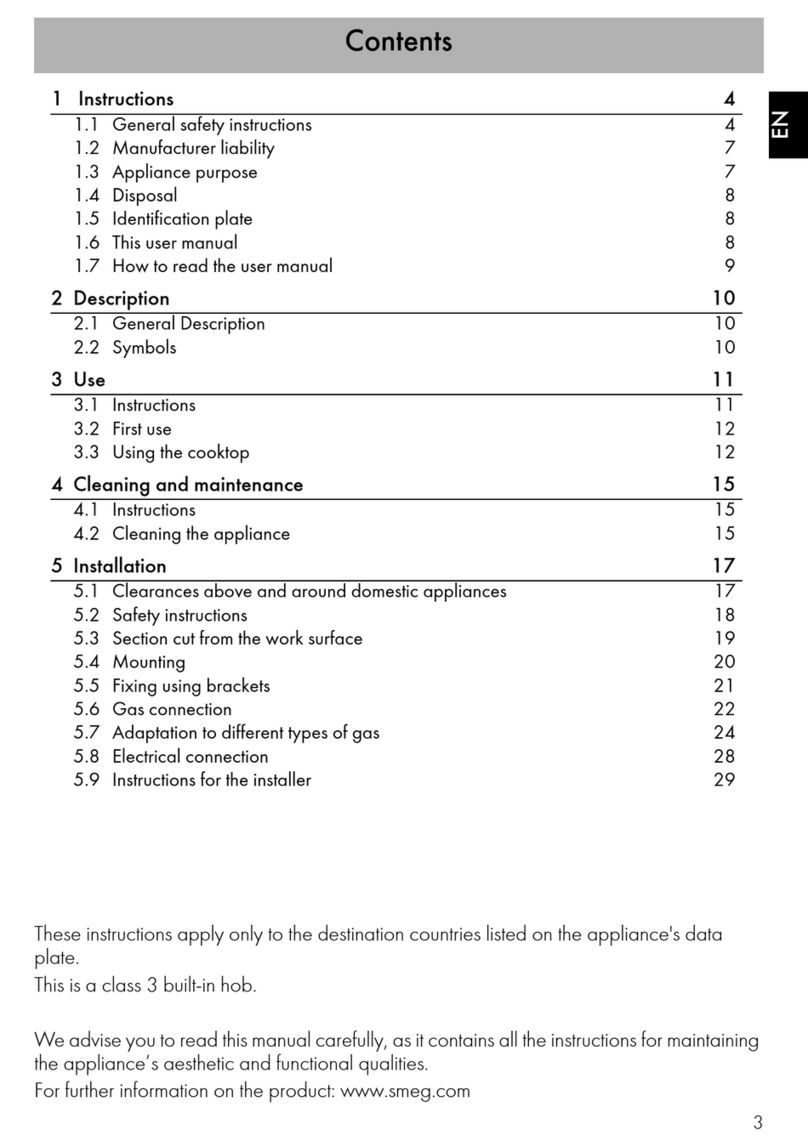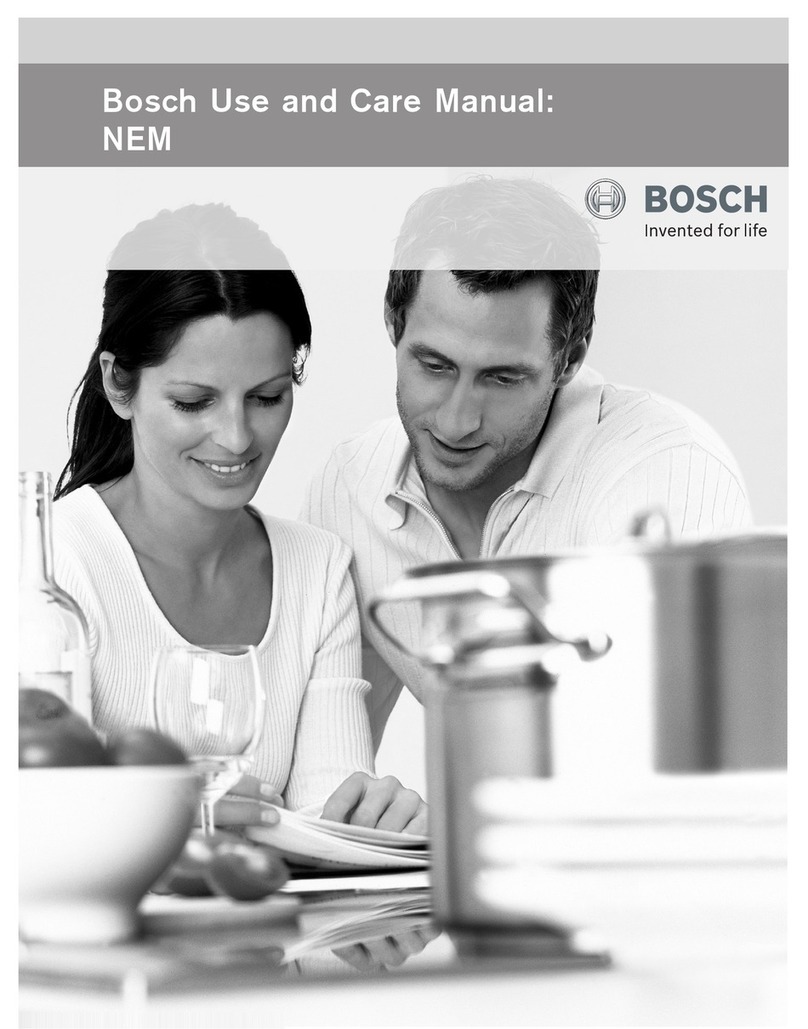BEST Chef GH 61 F User manual

BUILT-IN COOKTOPS
INSTRUCTIONS BOOKLET


Warnings:
This appliance is designed to be built into a housing unit.
-
The installation class is type 3 for gas and type Y for electric parts.
-
Housing units must be designed to withstand temperatures of up to 90°C or over.
-
For correct installation, refer to the relevant paragraph and reference drawings.
-
The use of a gas cooking appliance produces heat and humidity in the room in which it is
installed. Ensure the kitchen is well ventilated: keep natural ventilation openings open, or install
a mechanical ventilation device (extractor hood with exhaust duct). In the case of intensive or
prolonged use of the appliance it may be necessary to provide additional ventilation, for example,
by opening a window, or more efficient ventilation, for example by increasing the hood speed.
This handbook is valid for several types of cooktop.
Refer to the data plate on the back in order to identify the model that corresponds your appliance.
These informations, together with the instructions and the illustrations in the following paragraphs
will show you the characteristics of your appliance.
An Example:
Legend:
Trade Mark
Corresponding model
Technical code
Customer code
Power inputs
Voltage and frequency data
Country of target market and gas details
Gas burners power
Gas burners consumptions
Gas burners
The delivery of gas to the burners is controlled by the knobs shown in fig.3 that in turn control the taps.
The symbols, depending on the various versions, may be printed on the knobs or on the control panel.
By moving the indicator to coincide with the printed symbols, the following adjustment can be made:
Tap closed, no gas delivery
Maximum capacity, maximum gas delivery
Minimum capacity, minimum gas delivery
Burners without safety valve - ignition
To light one of the burners, press the knob down and turn it to the maximum delivery position,
holding down until the burner lights.
COOKTOP SPECIFICATIONS
(1)
(2)
(7)
(3)
(4)
(5)
(6)
(8)
(9)
Fig.3
USING THE COOKTOP
1

Burners with safety valve - ignition
Some models are equipped with safety valves which automatically shut off the gas delivery
in the event the burner should, for any reason, go out. To relight the burner, turn the knob to
position "tap closed" and repeat the ignition procedure explained in the following paragraphs.
To light one of the burners, turn the gas tap knob to the maximum
delivery position, then press and hold down it for about 4÷5 seconds.
Warnings:
-
Once the burner is light on, adjust the flame by turning the knob to obtain the desired intensity.
The setting must always be positioned between the maximum and minimum, and never
between the maximum setting and the off position.
-
If the burner is difficult to light on, or if the flame is tall or irregolar, turn off immediately
turning the knob to "off" position and call Assistance Service.
-
If the particular nature of the local gas supply makes it difficult to ignite the burners with the knob
turned to the maximum setting, repeat the operation without a pan in position and with the knob
turned to the minimum setting and without pan stands.
-
Warning: The ignition device must not be used for more than 15 seconds. If after this length of time the
burner does not light, or if it goes out again accidentally, wait 1 minute before trying to ignite it again
Grids
The panstand grids are designed to make the appliance easy and safe to use. Always check the
panstand grids are properly positioned before using the appliance. Furthermore, always check the
protective rubber feet are all present and correctly positioned.
Special "WOK" support grid (fig.2)
This is placed on top of the triple crown burner
when using a “WOK” (concave bottom pan).
In order to prevent serious malfunction of the burner,
never use a wok without this special grid
and never use the wok grid for flat bottomed pans
Choosing the right burner
The symbols stamped on the control panel
near the knobs indicate which knob correspond
to which burner. To choose the most suitable burner,
take into account the diameter of
the pan as well as the pan capacity (see table).
The diameter of the pan must be proportionate to the burner power in order to ensure high yield.
rear Ø200mm
200 mm
60 mm (with reducer)
160 mm
160 mm
140 mm
frontal Ø180mm
SR
Semi-rapid
R
Rapid
A
Auxiliary
maximum pan Ø
fig.2
220 mm
TR
Triple-crown
200 mm
minimum pan Ø
Burners
2

Electric hotplates
Warnings:
-
Never cook food directly on the electric hotplates; always use suitable pots or containers
-
Absolutely do not leave the electric plates working without any pots on it.
These wrong use may cause overheating, damages to the appliance and fire hazzard.
-
Take all precautions possible to avoid spilling liquids onto the hotplate when it is hot.
-
Do not use the appliance if the surface is broken or damaged; in case you find a crack on the
appliance, disconnect immediately he electric supply and contact the After-Sales service.
-
Bear in mind that the cooking zones remain hot for a relatively long time (about 30 min.),
after switching off.
-
Never clean with high-pressure water or steam-cleaning equipment.
-
Do not put flammable materials (paper, plastic, etc…) on the cooking zones (plates or glass-ceramic)
-
Do not allow heavy or sharp objects to fall on the glass-ceramic cook top.
-
Do not stare at the halogen lamps on the cook top.
-
Use flat bottomed pans only with a diameter such as covers the entire burner surface.
Switching on the hotplates:
To switch on the electric hotplate, turn the knob to the desired position.
Numbers 1 to 6 or 1 to 10 (depending on whether the cooktop is fitted with a
power switch or regulator), indicate the settings in progressing temperature (See Table).
When the electric hotplate is in operation an indicator led on the control panel lights up.
Using the electric hotplates:
Once reached the heating required, adjust the power intensity, bearing in mind that the hotplate
will continue to emit heat for several minutes after being switched off;
Depending on the food to cook, adjust the power intensity following the reccomendations below:
0
0
Off
1
2
3
For keeping food warm or reheating small
4
amounts of liquids
5
Reheating larger quantities,
6
whipping creams and sauces
7
To simmering, soups, pasta, risottos, continuation
8
of steaming, cooking steaks and fries in general
8
Browning meats, roast potatoes, fried fish and
9
for bringing large quantities of water to a boil
6
Fast frying, grilled steaks, etc.
4
5
10
1
3
2
Knob position
Cooking type
Switches
Regulator
figure 103/A figure 103/B
For melting (butter, chocolate, etc..)
3

Type of hotplates:
solid plates (EH31BIX)
The cooktop may be equipped with a Ø145 or a Ø180 hotplate, conventional or rapid power.
The conventional hotplate is entirely black, while the rapid hotplate has a red dot in the centre.
Essentially, the rapid hotplate differs from the conventional one because it offers:
-
greater power;
-
more rapid reaching of desired temperature;
Some electric plates are equipped with a safety thermostat that reduce power and stop the tension
in case of overheating of the appliance (for example, if forgiven working).
glass-ceramic hotplates (VH31HLX)
The glass-ceramic cooktop permits rapid vertical transmission of heat from the heating element
below the cooktop to the pots or pans placed on top of it.
Heat does not spread horizontally, thus at a distance of just a few centimetres from the cooking
zone, the glass remains relatively ”cool” to the touch.
This appliance is equipped with a "residual heat" indicator that lights up if the temperature of the hob
is above 70°C, even when turned off.
Residual heat persists for a relatively long time after the cooking zone has been switched off.
Absolutely do not touch the cooking areas or leave flammable objects near it until the lamp is off.
The indicator lamp turn off automatically once the temperature of the cooking zone falls below 70°C.
Barbecue
To turn on the element, turn the knob clockwise; this sets the relative thermostat,
with settings from “1” to “10”.
The pilot light turns on to show that the element is in operation.
It is normal for some types of lamp to show a little light even when the plates are not working.
Using the grid: Before using the grid, it is always advisable to check that it is firmly
positioned and correctly placed on the hob. Also check that the rubber pads it rests on
are intact and properly in place.
Lava rock
: Place the rock inside the tray provided and dispose of the bag.
Once it is in place, turn on the heating element.
Fryer
To set the cooking temperature, turn the knob clockwise, up to a maximum setting of 200°C.
When the heating element comes on, two lights, one green and one red, light up.
The red light goes out when the selected temperature is reached.
It is normal for some types of lamp to show a little light even when the hob is not working.
Advice and warnings:
Put the frying oil in the container provided before switching on the heating element.
After cooking, wait for the oil to cool before emptying the container.
After cooking, turn knobs back to the “0” setting.
If the regulator thermostat fails, a thermostat with manual reset will be activated;
this must be reactivated by a skilled engineer.
4

Important!
-
These instructions are intended for qualified technicians.
-
The appliance must be installed correctly, in compliance with current laws.
-
Before carrying out any operation on the appliance, it must be disconnected from the electric supply.
Fitting the appliance in the worktop
The cooktop may be fitted into any worktop, as long as it is heat resistant (minimum temperature of 90°C)
The dimensions of the hole to be made in the worktop and the minimum distances between rear
and side walls and those above the appliance are shown in figures 5 and 6
Fig.5
GH61B / GH61BS
GH62F / GH61F
GH62LC
GH62LC
290
585
585
595
290
290
490
480
480
480
490
490
270
560
560
560
270
270
510
500
500
510
510
510
EDABC
fig.6
560 480 510 685 35
35
35
35
40
INSTALLATION INSTRUCTIONS
WH31 / GH31
BH31
50
270 490 510 290 150
FH31
EH31B / VH31HL
45
5

Isolation below (fig.7):
-
If the cooktop is installed without an oven below it, a separator panel must be placed between
the bottom of the cooktop and the housing below it, at a minimum distance of 10 mm.
-
If the cooktop is installed over an oven, place a separator panel at a minimum distance of 15mm and follow
the oven manufacturer's instructions, ensuring nonetheless sufficient aeration as specified in fig.7.
In any event, the electrical connection of the two appliances must be carried out
separately,
both for electrical safety and to facilitate removal.
It is advisable to use an oven equipped with an internal forced cooling system.
Fixing the cooktop (fig.8):
To fix the cooktop in the housing, proceed as follows:
-
Position the special gasket supplied [C] along the outer perimeter
of the worktop, following the diagram shown in fig.5, so that the
ends of the gasket meet exactly without overlapping
-
Position the cooktop into the worktop, taking care to ensure
it is placed exactly in the centre.
-
Fix the cooktop to the worktop using the special brackets
supplied [A], as shown in fig.8
Correct installation of the sealing gasket ensures complete protection against infiltration of liquids.
Installation area and removal of combustion fumes
The appliance must be installed and operated in suitable areas, and in compliance with current laws.
The installation technician must observe current laws governing ventilation and removal of
combustion fumes.
Please remind that the air required for combustion is 2m
3
/h per kW of power (gas) installed.
Fig.7
6

Installation area
Fig.9
In the room where the gas appliance is installed,
there must be a sufficient natural air supply to
allow the gas to burn correctly (in conformity of currents laws).
The natural flow of air must take place through an
opening made on an outside wall of the room
and having a working section of at least 100 cm
2
(A).
In the case of appliances without safety
valves, this opening must have a minimum
working section of 200 cm
2
(fig.9).
This opening must be made in such a way that it cannot be obstructed from inside or outside.
It should be positioned near floor level, preferably on the side opposite the fume exhaust devices.
If it is not possible to make the necessary openings, the air can be supplied from an adjacent, suitably
ventilated room, as long as this room is not a bedroom, a dangerous area or a lowpressure area.
Removal of combustion fumes
Combustion fumes produced by gas appliances must be removed by means of a hood connected
directly either to an exhaust duct or to the outside (fig.7).
If a hood cannot be installed, an electric extractor fan must be fitted to the outside wall or the window.
This electric extractor fan must have a sufficient capacity to guarantee a change of air of the
kitchen of at least 3-5 times its volume.
Components shown in fig.7:
A
Opening for air supply
C
Hood for exhaust removal of combustion fumes
E
Electric extractor fan for removal of combustion fumes
Connection to gas supply
Before installation, make sure the type and pressure of the local gas supply are compatible with the
cooktop settings.
To do this, check the data on the appliance data plate on the cooktop as well as on this handbook.
The gas connection must be carried out by a qualified technician in compliance with local current laws.
If using metal hoses, ensure these do not come into contact with any movable parts and are at no point
crushed. Carry out the connection in such a way as does not cause any stress whatsoever on the appliance.
The gas supply connector is threaded G½”.
After connection operations, check for leaks using a soapy solution.
Electrical connection
Before connecting the appliance to the electricity supply, check that the voltage corresponds to that on the
data plate and that the power supply cable is suitable for the appliance load also stated on the data place.
If the appliance is connected directly to the mains, fit an all-pole disconnect switch with minimum
contact gap of 3 mm, adequate for the appliance load and complying to regulations.
The plug used must support the power of work of the appliance.
7

Warnings:
-
Do not use reducers, adapters or switches for connection to the mains, since these
could overheat and cause burns.
-
Earth connection is required by law. The manufacturer declines all liability
resulting from failure to observe this regulation.
If the power cable must be replaced, use a cable having identical characteristics to the original
supplied by the manufacturer, suitable for the load and temperature (type T90°C). This is available
from After-sales service. Furthermore, the end of the power cable to be connected to the appliance
must have the Yellow-Green earth conductor 20 mm longer than the other conductors.
The cable must support the load of the appliance.
Refer to the table below for the size of the power cable
Only with gas burners
With electric plate(s) <= 1000W
With electric plate(s) >1000W <2000W
With electric plate(s) >=2000W
Should it be necessary to replace the supply cord,
connect the wire in accordance with the following colours/codes:
BLUE
NEUTRAL (N)
BROWN
LIVE (L)
YELLOW-GREEN
EARTH (
-
)
-
Check wether there is a omnipolar switch available on the domestic line which is compliant with
current standards laws.
Otherwise, place a device easily reachable between the appliance and the electricity line.
-
If the cable result damaged, it must be quickly replaced with a new one by a qualified technician
or call the After-Sales service.
If a different type of gas from the one indicated on the rating plate is used, the injectors must be replaced.
If spare injectors are not supplied with the appliance, they are available from the After-sales service.
For the choice of replacement injectors, refer to the injectors table at the end of this booklet.
The injectors are identified by their diameter, which is expressed in hundredths of mm, stamped on
the body of the injector itself.
Replacing the injectors
-
Remove the grids and burner caps from the cooktop
-
Using a socket wrench, replace the injectors “J”
with the suitable ones for the gas used
-
Replace the burners
The burners do non require primary air adjustment.
Adjustment of minimum setting
After replacing the injectors, light the burner and remove the knob. Turn the tap to the minimum setting
and insert a screwdriver in the rod: tighten to reduce the flame, loosen to increase the flame. (fig.)
For gas G30/G31, tighten the adjustment screw fully
Cooktop type
Wire size
Ø0,75 mm
2
Ø1,50 mm
2
Ø2,50 mm
2
Ø2,00 mm
2
ADJUSTMENT TO DIFFERENT TYPES OF GAS
8

The flame must result small, uniform and regular all around the burner crown.
Check that:
-
quickly turn the knob from max. to min. position of gas power, the flame doesn't go over
-
for burners with a safety device, the flame have to licks the thermocouple
-
leaving the burner alight for a few minutes, it doesn't go over
To maintain the cooktop in optimum condition, clean it regularly after each use, allowing it to cool
before cleaning.
-
Never use abrasive or sharp substances or materials to clean the surfaces
-
Never clean the appliance with high pressure water or steam cleaning equipmenT
-
Do not use flamable or alcoolic cleaners
Enamelled parts:
All enamelled parts should be cleaned with a sponge and soapy water or specific detergents.
Never use abrasive cleaning products. Dry thoroughly after cleaning.
Stainless steel top:
The stainless steel top should be cleaned with a damp cloth and proprietary detergents
commercially available. After rinsing, dry preferably with a chamois leather.
Grids:
The enamelled panstand grids of the cooktop are dishwasher safe.
Stainless steel panstand grids may take on a bluish tinge on parts around the burners as a result of
the high temperatures. This effect can be reduced by using commercially available steel wool pads.
Burners:
The burners, comprising two parts, can be removed and cleaned using suitable
detergents. After cleaning, dry the burners thoroughly and reposition them
carefully in their seats. In models with electric ignition, always check that the
electrode “E” (fig.10) is clean. In models with safety device, clean the probe
“T” (fig.10) in order to allow regular operation of the safety valve.
Both the electrode and probe must be cleaned with care.
Upon completion of cleaning, replace the burners accurately in their seats.
To prevent damaging the electric ignition, avoid using it when the burners
are not in place.
Maintenance
The appliances do not require any particular maintenance, nonetheless it is advisable to have them
checked at least once every two years.
If the knobs become difficult to turn, or if there is a smell of gas, shut the gas supply tap and call
After-sales service. Faulty taps must be replaced along with their gasket.
CLEANING AND MAINTENANCE
Fig.10
9

10

-
! ,
. .
.
.
: .
-
, ,
.
-
, .
-
-
-
. ,
-
.
.
-
,
-
.
.
.
-
,
,
-
,
-
,
.
-
90/396/
-
73/23/ , 2006/95/
-
89/336/ , 2004/108/
-
93/68/
-
89/109/ ,
-
1935/2004: .
,
11

-
3Y
-
90°
-
,
-
, ,
. ,
: ,
().
, , , , ,
.
.
,
, , , .
, ,
:
:
(1)
(2)
(3)
(4)
(5)
(6)
(7)
(8)
(9)
.3, .
, ,
.
,
, .
, . .3
12

-
, , ,
,
.
,
.
.
,
-
,
« » ( ). ,
, ,
-
,
, « »
, ( 4-5 ).
,
:
-
« » ,
« »
-
, ,
.
, – .
-
,
-
,
, ,
,
-
:15 .
,
, 1
,
, -
:
-
, ,
« » , 4-5 .
, .
:
15 .
, .
13

-
« » ,
4-5 .
, .
(.1)
( )
, .
(.2)
( )
.
,
, , ,
.
( . .). ,
.
: . 140 x 350
, .
.
1 6 1 10, ,
,
( . .). ,
, ,
,
. :
-
. .
-
,
-
,
200/240
160/200
160
R
A 140
200/240
220/280
..
SR
60
TR
200
180
14

0
0
1
2
3
4
5
,
6
,
, ,
,
8
, ,
9
, .
6
, , . .
.
, . .« –
» .
:
-
-
-
, ,
!
.
.
, .
:
- ;
"1" "10".
, .
,
. : ,
, . ,
, , .
: .
, .
:
, -
200°C.
- .
5
10
3
4
1
2
( )
7,
8
15

, .
,
.
:
.
, , .
"0".
,
; .
!
-
.
-
, .
-
- ,
, ,
90° .
.5,6
GH61B / GH61BS
GH62F / GH61F
GH62LC
GH62LC
WH31 / GH31
270 490
50
FH31
40
BH31
270 490 510 290
.5 .6
ABCDE
510 290
270 490 510
EH31B / VH31HL
270 490 510
585
290 150
290 45
595
35
560 480 500 585 35
560 480 500
35
560 480 510 685 35
560 480 510
16

, :
-
,
,
10
-
,
,.7. ,
,
, .
,
:.8
-
,
,.5 ,
, .
-
, ,
.
-
,
.8.
,
-
.
. ,
2
3
/ ( )
,
, .
100 2, .
200 2( .9)
,
, ,
,
.
,
, , ,
,. (UNI-CIG 7129)
.7
.9
17

, ( .9).
,
.
3-5 . (UNI-CIG 7129)
,.9
A
C
E
, ( )
. ,
.
UNI-CIG 7129 7131.
UNI-CIG 9891,
2 . ,
. ,
.
½
.
ISO R7 .
ISO R228.
.
:
,
( . .).
, ,
, .
,
. ,
.
3 ,
.
-
, .
.
-
.
,
, .
(90° ). , ,
, ( - ) 20 ,
. . .
0.75
2
.
18
This manual suits for next models
16
Table of contents
Popular Cooktop manuals by other brands

Fisher & Paykel
Fisher & Paykel CG365CWACX1 Installation instructions and user guide

Bosch
Bosch NGM Series installation manual
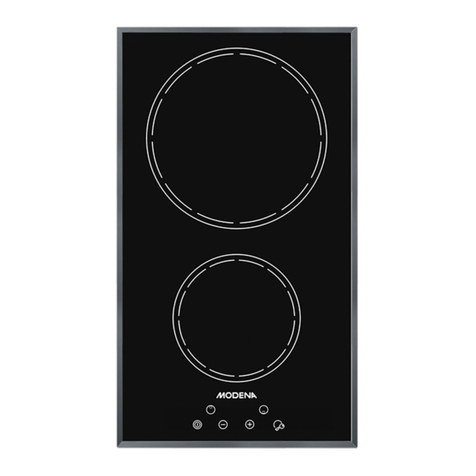
Modena
Modena BI Series manual
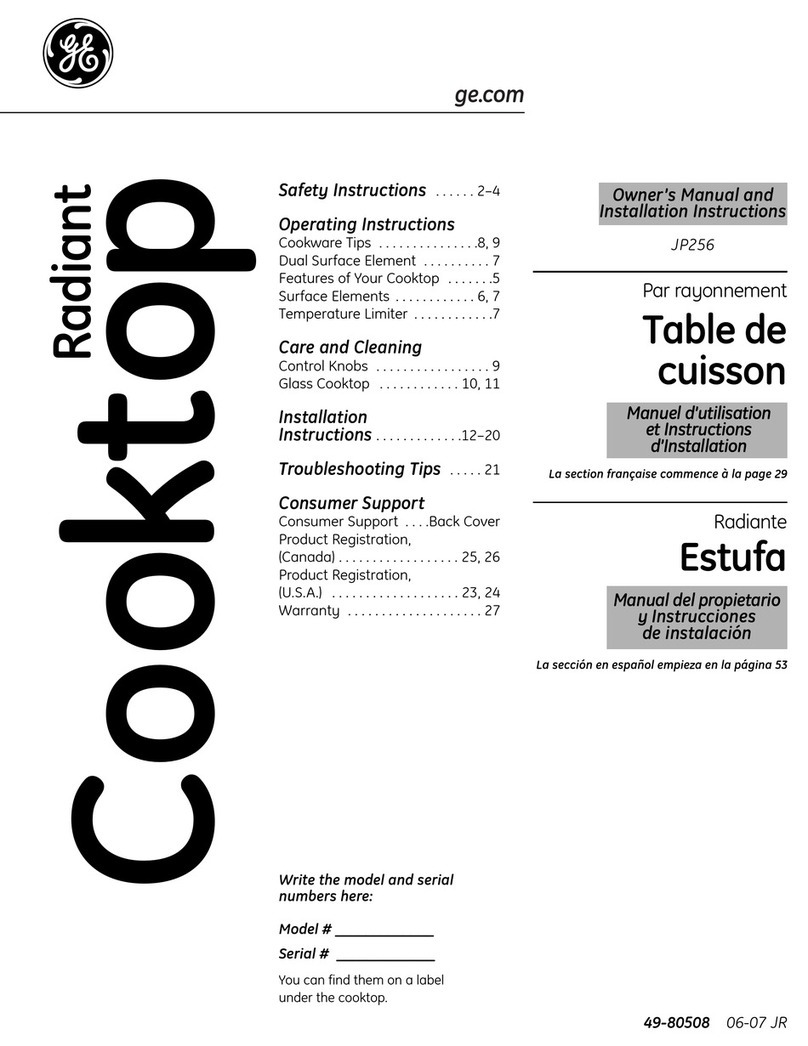
GE
GE JP256 Owner's manual and installation instructions

Jenn-Air
Jenn-Air PRO-STYLE 8112P342-60 Use and care guide
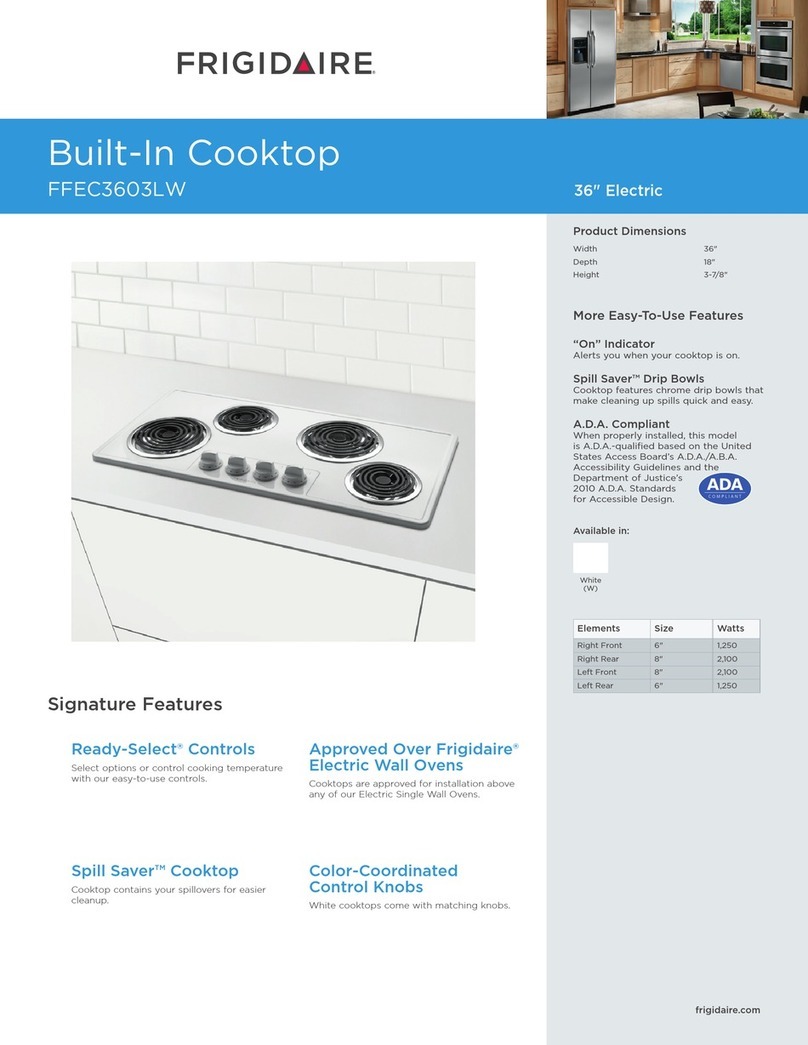
Frigidaire
Frigidaire FFEC3603LW Product dimensions
